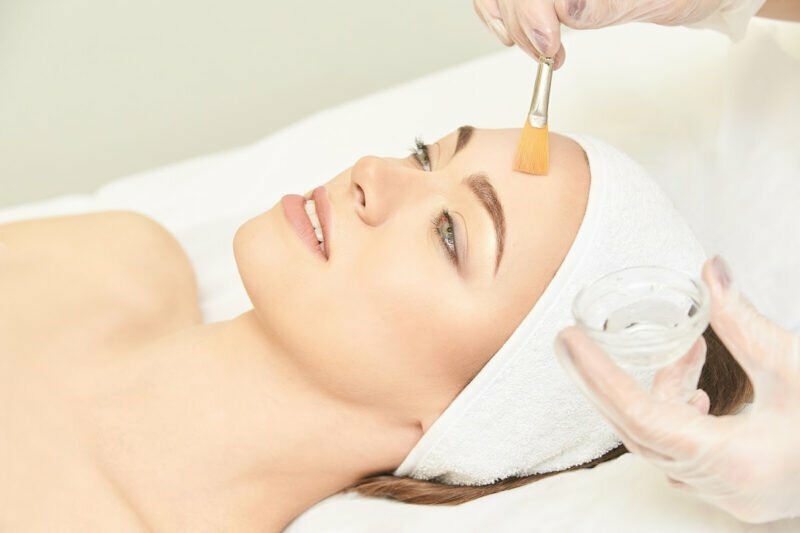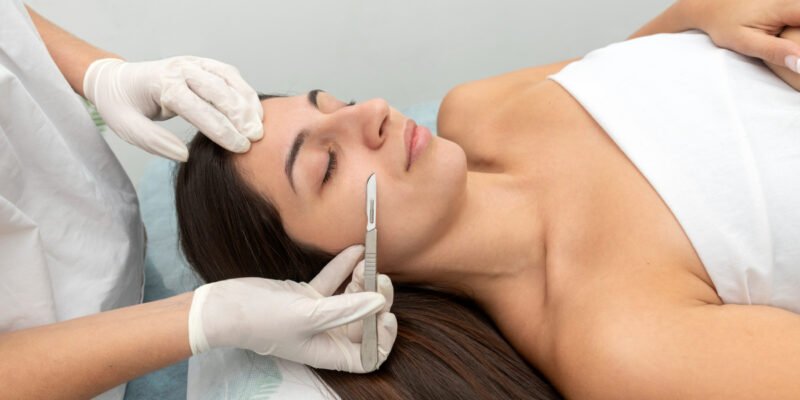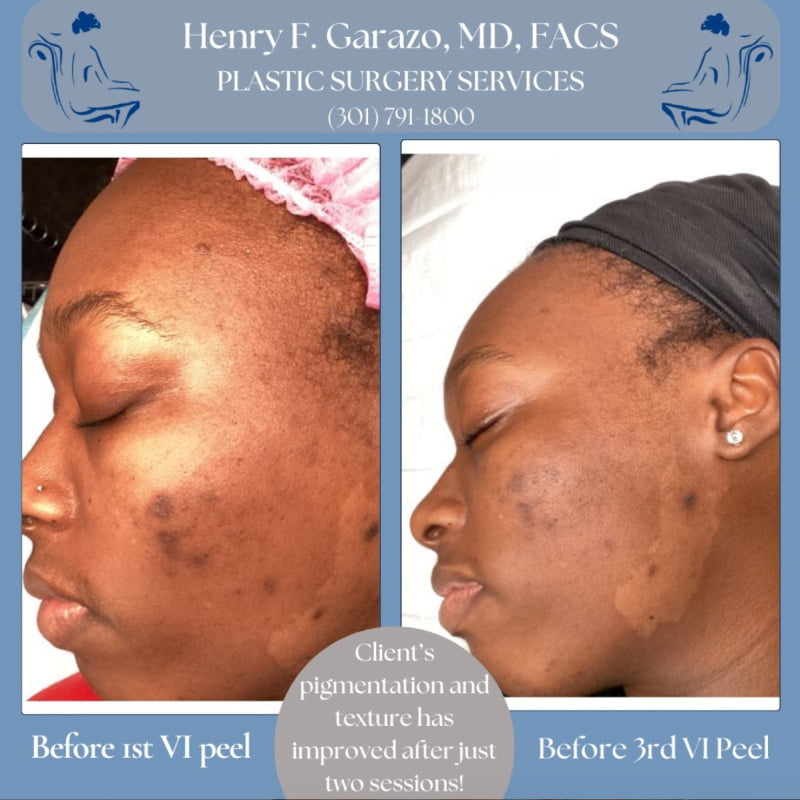
If a chemical peel is on your calendar, you can expect a medical-grade exfoliation that will do away with a number of skin concerns. But if you’re anything like us, you are always looking to level up your skincare game! With chemical peels, there are many ways you can improve on the results by adjusting your regimen pre-treatment and post-treatment, or by combining it with other in-office skin treatments.
1. Combine your peel with dermaplaning
Dermaplaning is an aesthetician treatment that involves passing a scalpel along the skin surface to remove dead skin cells and peach fuzz. When patients tell us they need to make their chemical peel count, we recommend having dermaplaning prior to the treatment: it will clear a path for the peel to penetrate deeply and give you the freshest, brightest complexion possible in a single session.

2. Prep your skin to accept the peel with a retinol regimen
A nightly retinol regimen clears your skin and smoothes wrinkles by promoting cell turnover. While it’s common to use retinol alone, it can also prepare your skin to get maximum advantages from a chemical peel. It helps to make the top layer of skin thinner, so you’ll see deeper and more evenly-distributed results.
There’s just one caveat: use retinol before a chemical peel only under the guidance of your aesthetic professional. They will help you select a clinically proven product with the appropriate concentration of retinol. They may also adjust your chemical peel formula with the pre-treatment in mind.
3. Protect your skin before treatment
For about 7-10 days ahead of treatment, you will need to discontinue certain products and carefully protect your skin:
- Avoid spending time under UV rays from the sun or tanning beds.
- Wear an SPF of at least 30 daily.
- Stop taking aspirin, ibuprofen, and any medications your aesthetician tells you to stop (this may include prescriptions).
- Discontinue all scrubs and avoid skincare ingredients that exfoliate your skin, such as salicylic acid, BHA, or AHA.
- Discontinue retinol or Retin-A unless you are using it under professional guidance.
- Avoid facial waxing. Shaving, on the other hand, should be avoided the day of your peel.
- Stop using any self-tanners.
4. Protect your skin after treatment
After a chemical peel, your skin will be especially vulnerable to sun and environmental damage, so wear SPF—even indoors! Be sure to select an appropriate sunscreen, use it correctly, and supplement your sun protection with other methods, too:
- Choose a broad-spectrum sunscreen of at least SPF 50. SPF 30 is the recommended minimum for daily use, but after a peel, higher protection is helpful. The broad-spectrum lotions included in our physician-only skincare lines offer a selection of non-irritating formulas that are non-greasy and safe to wear after your procedure.
- Apply the right amount of sunscreen. Use about a nickel-sized amount or more for the face; be sure you are also applying a generous amount of SPF to your neck.
- Wear sun protective clothing. Hats, clothing, and fabrics with a UPF (ultraviolet protection factor) rating will help by only allowing a fraction of the sunlight to reach your skin. The Skin Cancer Foundation recommends a wide-brimmed hat of 3 inches or more for daily use—you may want to spring for an ultra wide brim after your peel.
- Use antioxidants to prevent sun damage. No matter how high your SPF, a little sunlight is always getting to your skin. Antioxidants like vitamin C can be added to your skin care regimen to help stop free radical damage from UV rays.
- Schedule your peel for a time when you’ll be mostly indoors. Protecting your skin is easier when there aren’t any barbecues or river trips on the calendar, so you may want to schedule your chemical peels during the colder months. This can be especially helpful if you’ll have multiple consecutive treatments—we often recommend 3 for optimal results.
5. Schedule a series of treatments
While one chemical peel will improve your skin tone and texture, a series of treatments maintains and builds on your results. If you are looking to address more severe skin problems, wanting to fight continuing signs of aging, or simply wishing to maximize the benefits of your chemical peel, talk with your aesthetician or board certified plastic surgeon about planning ongoing treatment.

Visit Plastic Surgery Services for aesthetician services in Hagerstown and Frederick, Maryland
When it comes to your skin, trust a professional who is experienced with clinically proven treatments and techniques. Our licensed aesthetician Shelby has years of experience customizing skin treatments to give every patient their most glowing complexion. To schedule your treatment, call our Hagerstown practice at 301-791-1800 or contact us online.
Leave a Comment


